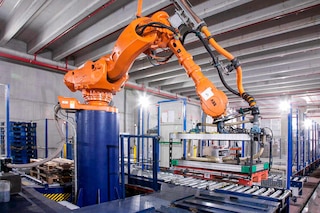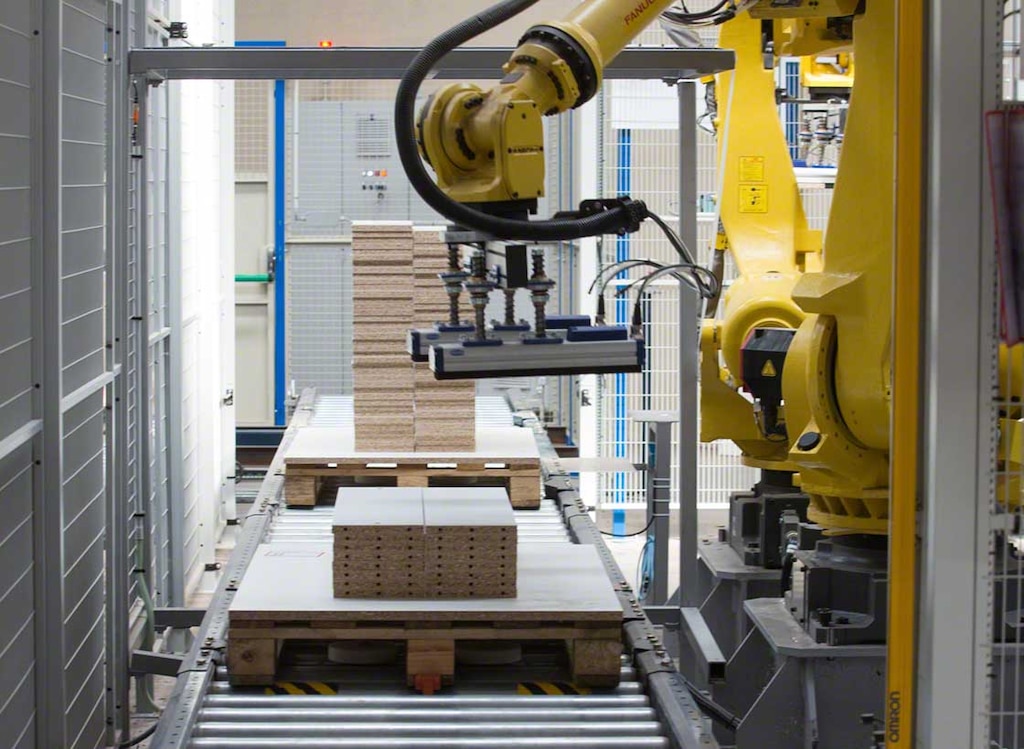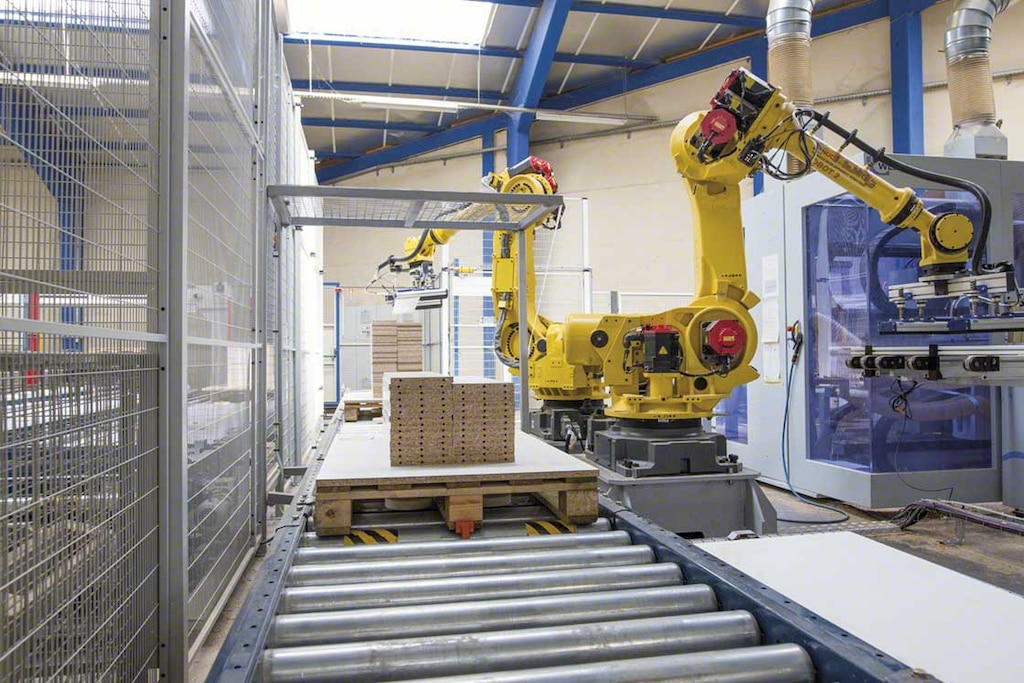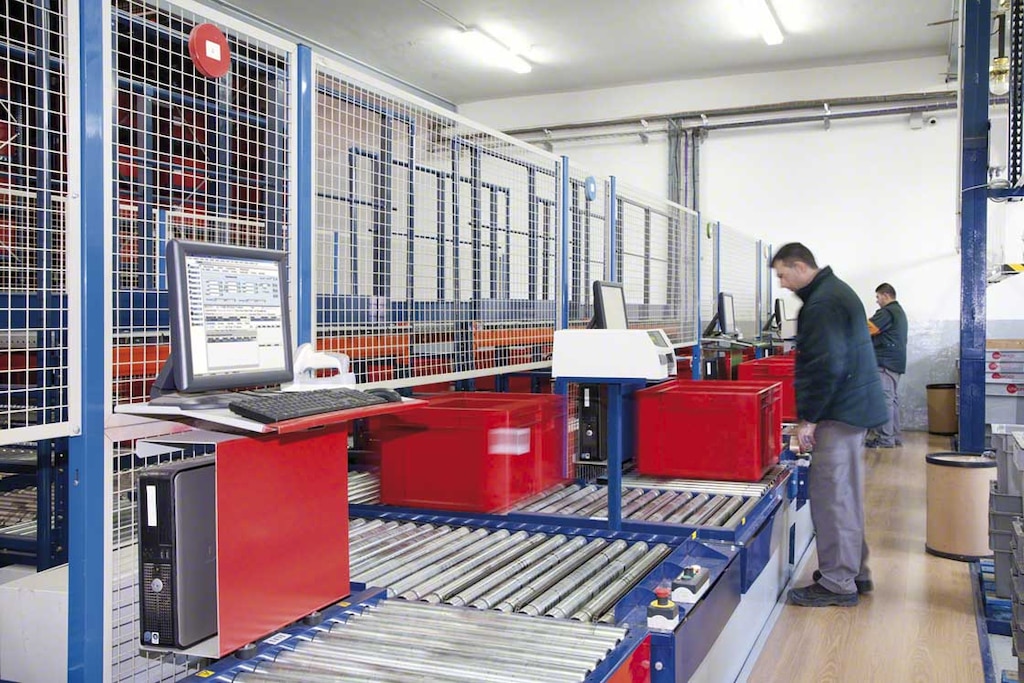
Pick and place: robots never tire
In the industrial sector, the concept of pick and place refers to the operation involving the removal of products from one location to place and organise them in another. An example would be packaging chocolates as they leave the production lines.
Generally speaking, this process tends to be tedious and repetitive. However, in times like these, in which Logistics 4.0 and Industry 4.0 are rapidly expanding, companies are turning to robotics to ramp up their productivity. The reason why? Automation saves time and eliminates low-value processes.
In this post, we’ll examine pick and place robots, their applications and their advantages. Welcome to the world of warehouses where robots do the picking!
Pick and place defined
Let’s start with a definition: pick and place is a technique that consists of picking a product and placing it in another location. In companies in industries as diverse as the food, automotive and pharma sectors, pick and place is frequently used when packaging products. Although it’s a simple task, it’s also extremely repetitive, time-consuming and not very ergonomic for workers.
Taking into account the fast pace of production processes nowadays, businesses seek solutions to speed up pick and place. The answer lies in automation. In recent years, a lot of progress has been made in the development of robots charged with packaging products automatically. A large number of companies have decided to implement this technology in order to shorten times and bring errors down to practically zero. By employing robots, operators who once performed pick and place tasks can now dedicate their time to other tasks that are more value-adding and more professionally satisfying.
These robots can also be used to prepare orders. For example, sustainable tableware business Nupik Internacional has installed these robots to carry out picking at its logistics facilities in Barcelona equipped by our company. There, an anthropomorphic robot handles more than 1,000 boxes an hour.
Operation of a pick and place robot
Picking an item and placing it somewhere else might seem simple for humans. But when it comes to robots, a number of different elements need to come together. These are the three fundamental components of a pick and place robot:
- Vision system: this is the way in which the robot identifies items and knows the coordinates of each product.
- Grip system: the robot picks the item and places it in the corresponding packaging by means of a vacuum handling system (to suction the product in the simplest and quickest way) or with the help of mechanical grippers (more accurate but not as fast).
- Control system: the PLC (programmable logic controller, which is the computer that governs a warehouse’s electromechanical processes) contains the programming necessary for the robot to work properly (the trajectories required to ensure that the robot picks the products and places them in the packaging).
As a general rule, pick and place robots are quite versatile. However, when deciding which type of robot to implement, there are several issues to consider, such as: the number of cycles to be carried out per minute, (that is, how many items to move per minute), the maximum weight of the products to be handled by the grip system, the space occupied by the robot and the artificial vision system it incorporates (sensors or cameras).

Applications of pick and place robots
Pick and place is a commonplace operation in numerous industrial sectors. Nevertheless, companies that rely on cobots (collaborative robots) to perform these tasks are the ones that truly make the difference. This is because, in this case, the robots carry out the hardest job and do so more effectively.
Packaging the products more efficiently makes the entire supply chain more competitive. For instance, automotive and spare parts companies make use of these robots to streamline component bolting and assembly. Meanwhile, food enterprises use cobots to package fruit, vegetables, and cookies quickly and continuously.
Another application would be to facilitate product assembly, as seen in the facility of furniture manufacturer Éurequip. Our company equipped its warehouse in Lambres-lez-Douai, France, with an anthropomorphic robot responsible for sorting and stacking shelves for furniture assembly. If this process isn’t carried out in a timely fashion, furniture manufacture is delayed.
These robots are not only devoted to moving products quickly and without error, but also serve to sort merchandise, thus, differentiating between them. While picking and placing products, they also carry out quality control. This is the case of robots that package fruit and vegetables, which select only those units that fall within the relevant parameters in terms of size and appearance.

Advantages of automating pick and place
As we’ve seen above, pick and place is a cumbersome, repetitive task for operators. Hence, automating it via robots brings a whole host of benefits. For starters, it’s possible to run uninterrupted production 24 hours a day, 365 days a year.
Being equipped with a robot in charge of removing and placing products in their corresponding packaging gives you more agility and improves the quality of the operators’ work. Employees no longer need to do this job and can focus on more complex and stimulating tasks.
Plus, pick and place robots are more flexible and can be adjusted to fit the particular characteristics of each manufacturing plant. No two production centres are equal, so these robots can be easily adapted to the available space and the type of merchandise to be handled.

Lastly, automation improves safety when managing goods. The robot’s grip system (whether by means of vacuum handling or mechanical grippers) is specifically designed to pick products with total stability. Likewise, automation prevents errors during order processing and guarantees improved hygiene, which is essential when handling food.
Pick and place robots constitute a solution under the umbrella of Industry 4.0; as such, they’ll probably coexist with other automated production systems. In a warehouse, it’s standard practice to install automated picking systems, such as anthropomorphic arms or two-or three-axis gantry robots. The deployment of one system or another will depend on the cycle times required and the number of orders prepared.
If you’re looking to automate your supply chain and increase the efficiency of your logistics systems, don’t hesitate to contact Mecalux. We have extensive experience designing and implementing automated solutions for all kinds of needs.
